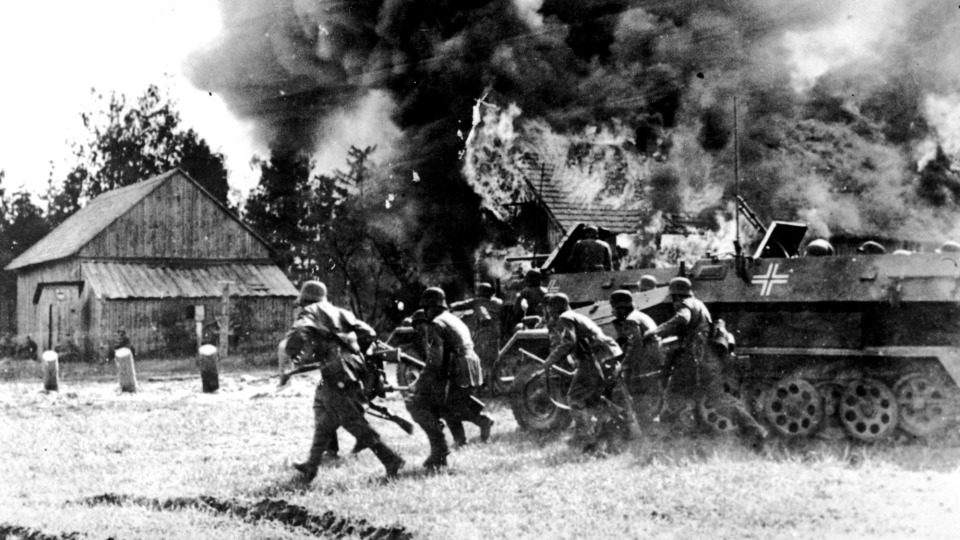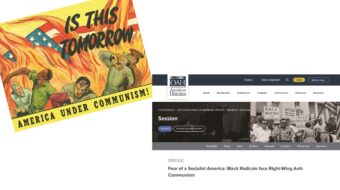
On June 22, 1941—80 years ago—the Nazi juggernaut, having already waged a “blitzkrieg” (lightning war) across Europe and occupied ten countries, smashed into the Soviet Union with what Hitler considered overwhelming forces. Hitler announced that Moscow would fall in four or six weeks. By autumn, he boasted, the Nazi war machine would be on its way to India, there to link up with Japan.
Military and political “experts” in England and the United States also predicted Hitler’s conquest of the Soviet Union within “ten days” to “six weeks.” Blinded by their capitalist class interests, they longed for socialism to fail. They feared and hated the very idea of Soviet socialism, which had denied them one-sixth of the earth for over 20 years.
But not everyone agreed. The Reverend Hewlett Johnson, the famed “Red Dean” of Canterbury, England (whose 1940 book, The Soviet Power, sold two million copies in English), boldly stated just five days after the Nazi invasion: “Against the heroism of the Red Army, against the no less heroic labor of 193 million of Soviet peoples, this Frankenstein monster of a war machine which Hitler has created will crash as upon a rock.”
The Dean expressed the hopes of millions already under the fascist boot. He spoke also for the class-conscious and anti-fascist forces in Britain, the U.S., and around the world who saw that this latest Nazi attack had in fact placed the Soviet Union at the head of the anti-fascist, anti-colonial world struggle.

The Soviet government had expected a Nazi attack, but not precisely in June 1941. The element of surprise and the sheer size and speed of the invading hordes cost the Soviet people heavily. But unlike the situation in the capitalist countries which the Nazis had overrun, there was no panic in the Soviet Union. Hitler found no social stratum or class on which to immediately rely for collaborators. There was no way to easily divide and conquer.
For over five months, the Soviet armies retreated, giving up hundreds of miles of territory. But they forced the invader to pay dearly for every inch. They called it an active defense, with close cooperation between the Red Army and the people, led by their Communist Party. According to reports in the June 23, 1941, edition of the Daily Worker, within hours of Nazi troops crossing the Soviet frontier from Poland, workers at mass meetings in Moscow were passing resolutions declaring their intention to “Dispatch Hitler to Hell.”
Whole industries were moved hundreds of miles eastward, along with raw materials, machines, tools, and food stuffs. What couldn’t be moved, such as power dams that were among the first fruits of socialism, were destroyed so the Nazis couldn’t use them.
Trains, trucks, and vehicles of all kinds delivered troops, ammunition, and war material westward to the fighting front, and returned east laden with not only equipment but with people. Hundreds of thousands of children were rescued from each war zone; a people’s work force went east to set up the industries anew and raise food. Special efforts were made to evacuate civilian Soviet Jews away from the Nazi murderers.
By August, U.S. President Franklin Roosevelt hailed the Soviet defense as “magnificent.” How was such a defense possible?
How socialism stopped Hitler
The Nazi war machine had run into a living wall of unity, determination, and courageous resistance. Since the 1917 October Revolution, the Soviet workers and peasants had been creating a new society. Guided by the science of Marxism-Leninism and the Bolshevik Party, they had uprooted the old order, ended exploiting classes, and brought to life Lenin’s plan for socialist construction based on an alliance of the working class and peasantry.
The new productive relations under socialism had released a great initiative and inventiveness of the workers, collective farmers, and socialist intelligentsia. Socialist morality and humanism took root on a higher plane than was ever possible before, anywhere.
The Soviet Union was a land of collective methods, conscious organization down to the smallest unit, and the indomitable will of its people to defend not only their homeland, but their socialist homeland—a social order they had built themselves and which truly belonged to them.

By the time of the Nazi invasion, the Soviet people had achieved a lot. Large-scale industry in 1940 was 11 times bigger than it had been in 1913. The Soviet Union led the world in the production of wheat; raised two-thirds of the barley, oats, rye, sugar beets, and flax; one-fourth of the sugar. It was first in the production of tractors and locomotives, and second in oil. In 1938, it produced as much iron ore as the U.S. Nearly 400 new cities and towns had been built as centers of socialist industry.
The 1940 budget of 173 billion rubles included 57 billion for financing the national economy, 56 billion for defense, and at the same time, an impressive 41 billion rubles for social and cultural services. The people had moved from 19th place to first place in literacy in the world.
All this was what the Soviet people, their Communist Party, and the Red Army rose to defend.
Uniting the world against fascism
By the summer of 1941, the Red Army was 4.5 million strong. The tireless, organizing, cohesive inspirational force on all three fronts—the partisans, the fighting front, and the People’s Army—was the Communist Party of the Soviet Union. Half a million Communist Party members served in the armed forces, many of them as political officers concerned with troop education and morale.
As the active defense unfolded from July to November 1941, the Red Army organized partisan detachments and broke them off behind the Nazi lines, to continue the fight and to organize more guerrilla resistance units. A “People’s Army” not only re-established production in the Soviet rear but served in fire brigades, anti-paratroop squads, and other needed work.

Roosevelt sent Harry Hopkins to Moscow in the fall of 1941 as his personal emissary to get a first-hand report. Hopkins was warned by many “experts” not to go, as Moscow could fall at any time. But he went and returned, greatly impressed by the organization, determination, and unity of the Soviet people.
On December 5 and 6, the Red Army launched its first major counter-offensive and saved Moscow. Here ended the notions of the invincibility of the Nazis ended, as the Red Army encircled and destroyed 38 Nazi divisions. From Dec. 5, 1941 to mid-January 1942, the Nazis lost over 300,000 troops and huge amounts of military equipment.
The arch-reactionary Gen. Douglas MacArthur admitted that he had never read of or witnessed “such effective resistance to the heaviest blow of a hitherto undefeated enemy, followed by a smashing counter-attack…. The scale and grandeur of the effort mark it as the greatest military achievement in all history.”
But there would be more than three years of war yet to come, including the titanic battles of Stalingrad and Kursk in 1942 and 1943.
However, the international response to the Moscow victory put an end to the reactionary designs to make the USSR fight Hitler alone. On Jan. 1, 1942, some 26 nations joined with the Soviet Union in formally signing a declaration of cooperation for the defeat of Nazi Germany. From then on, there would be no stopping until the Red Army was in Berlin and the red Soviet flag flew over Hitler’s Reichstag.












Comments